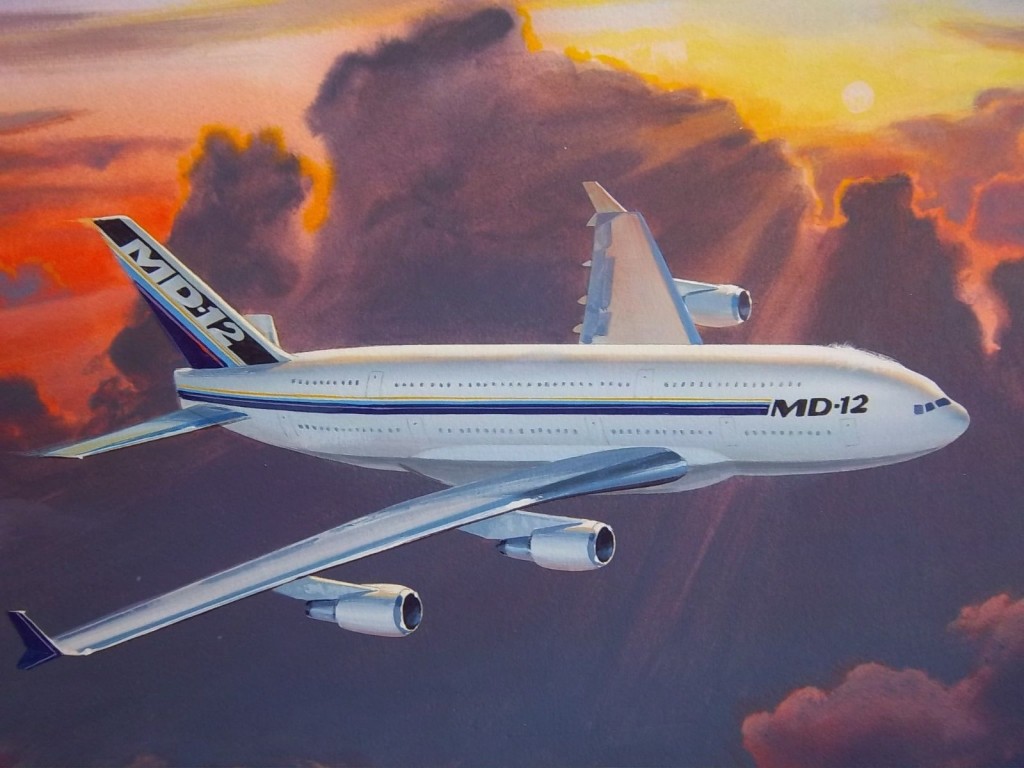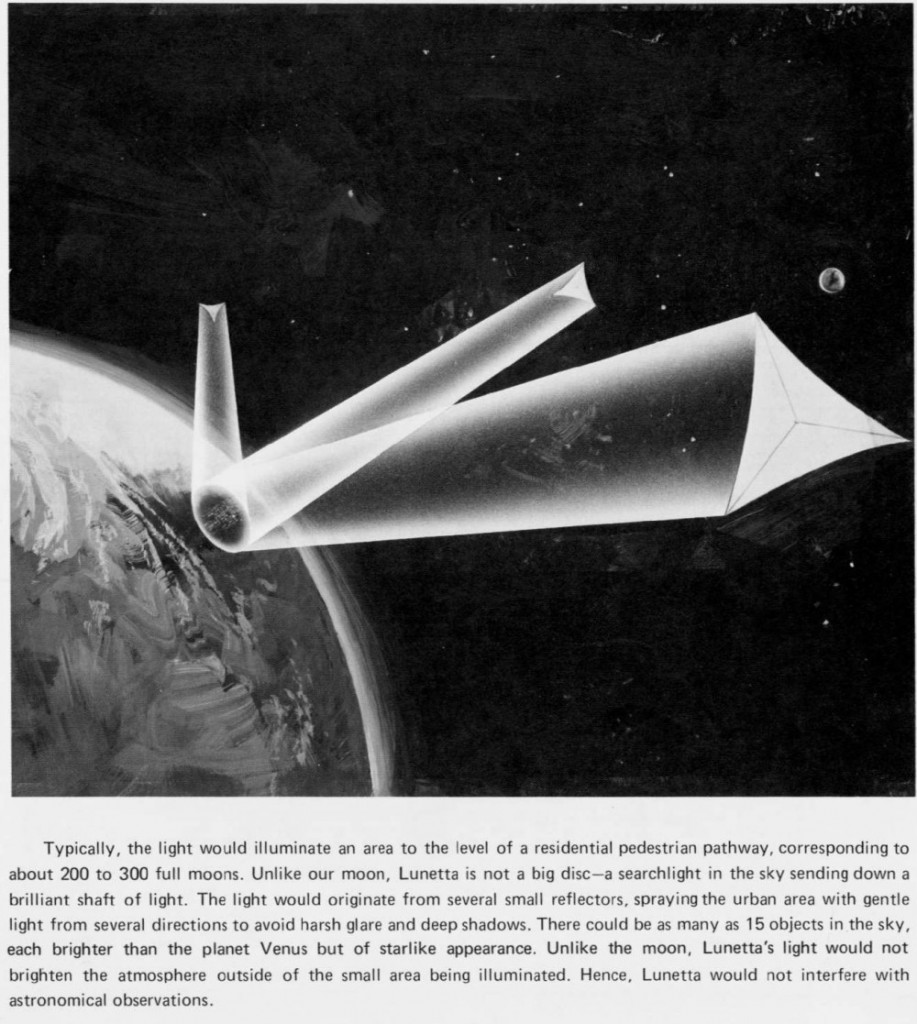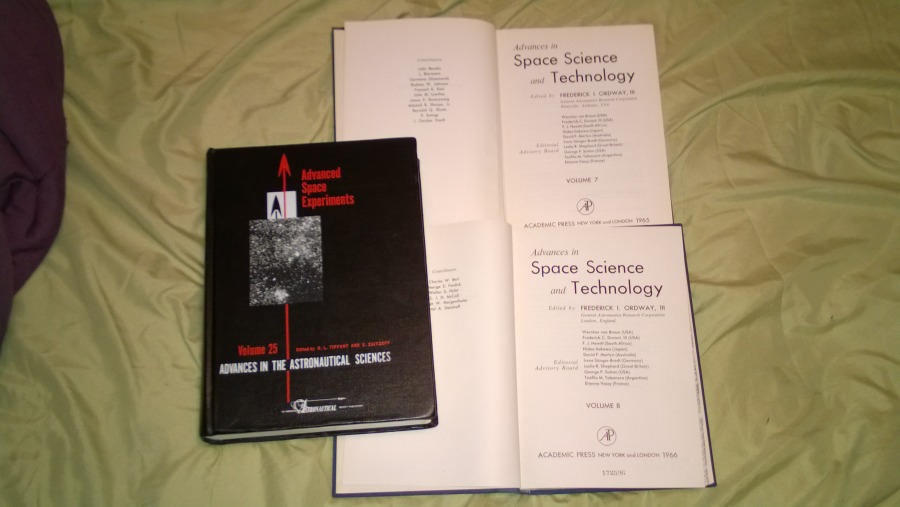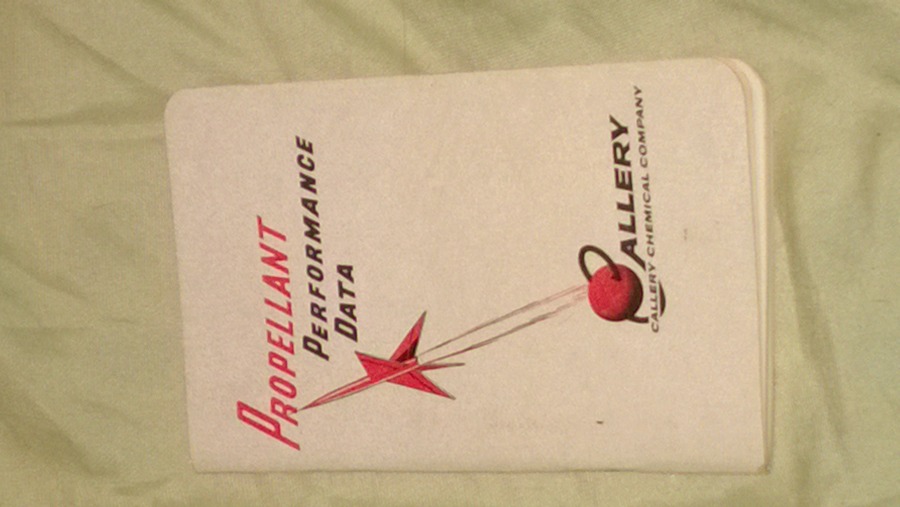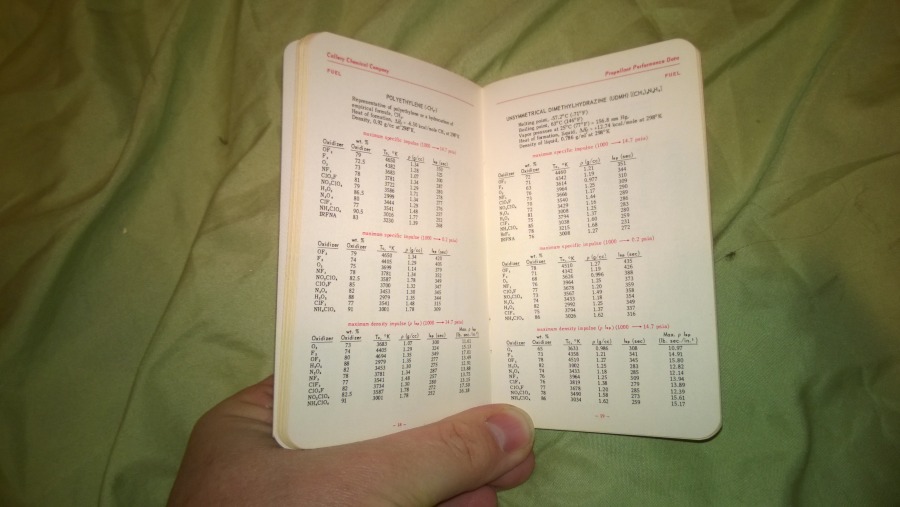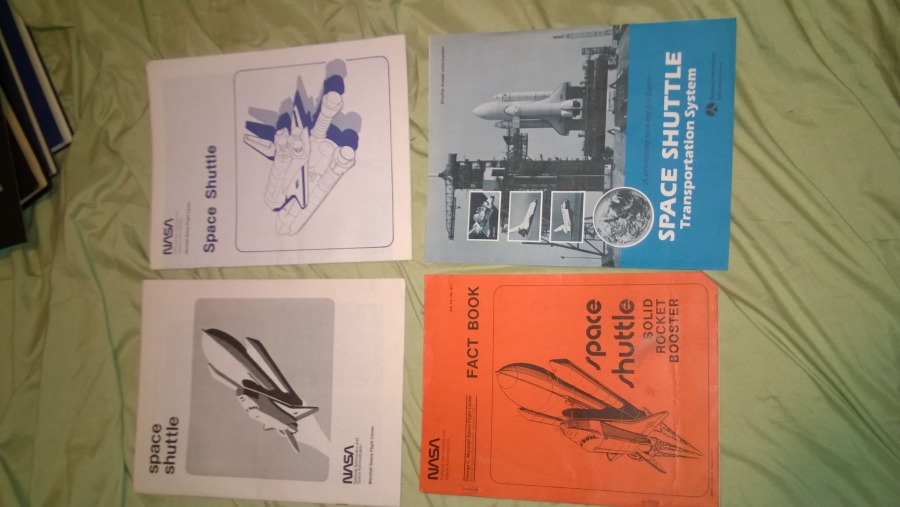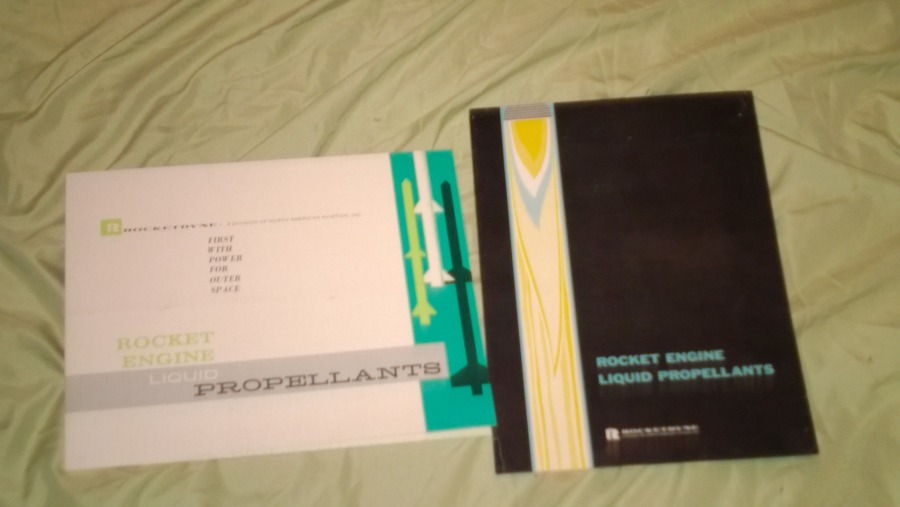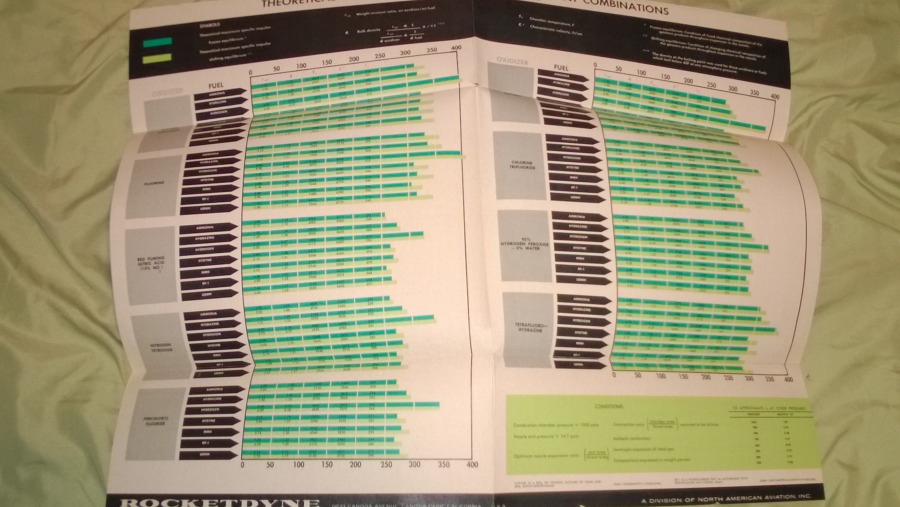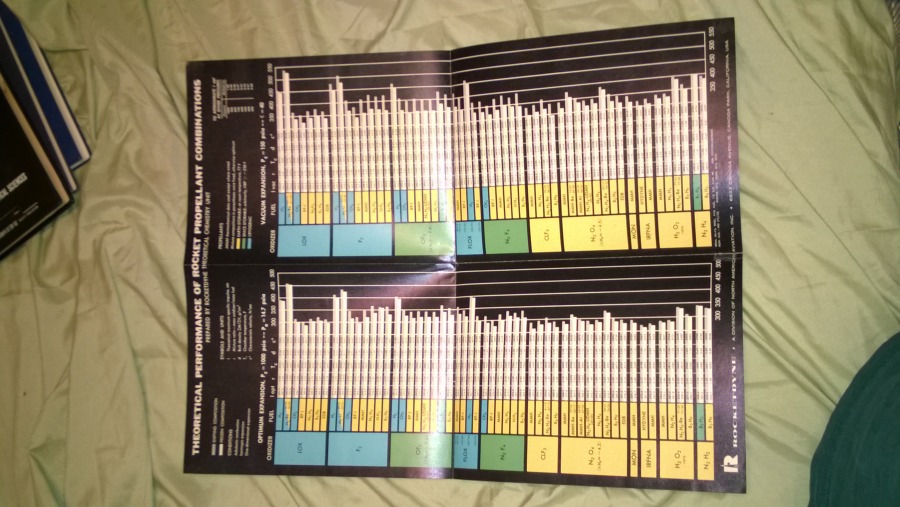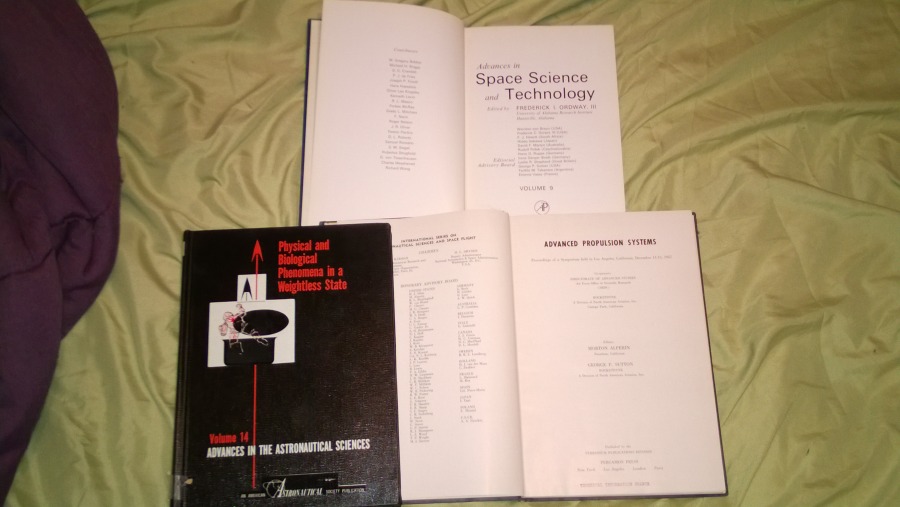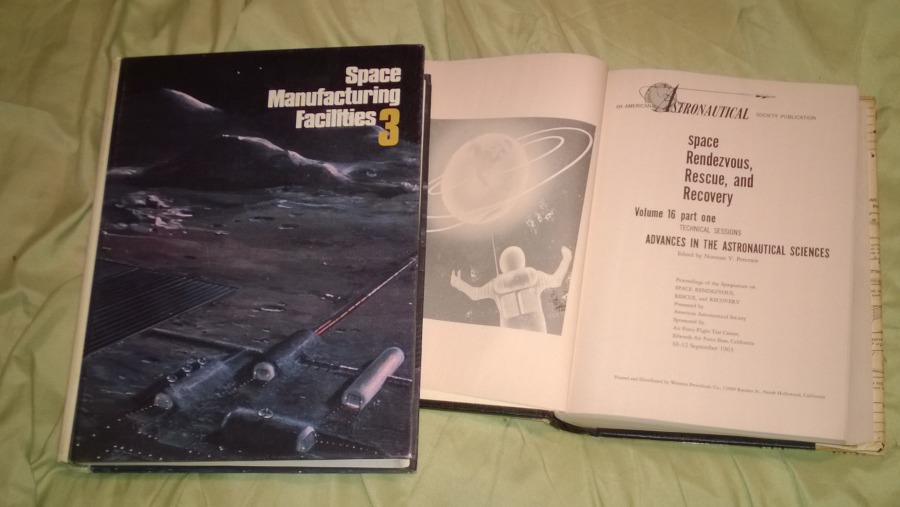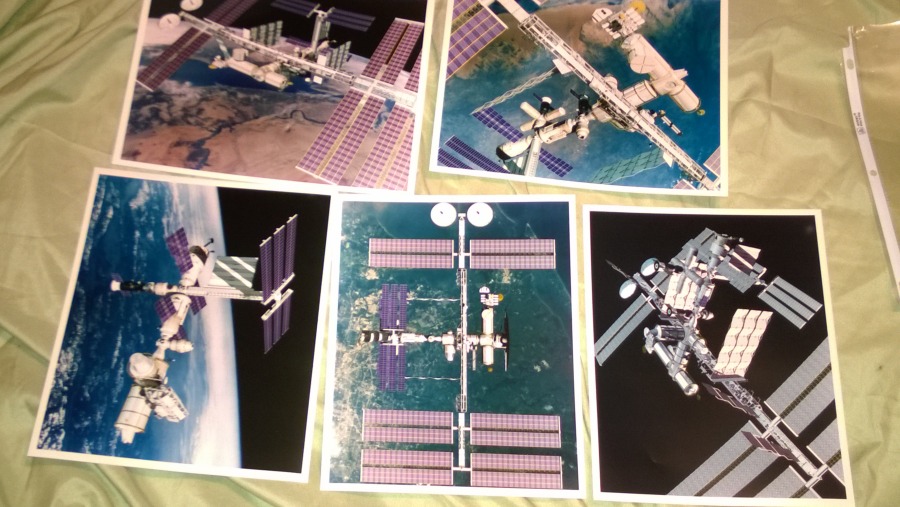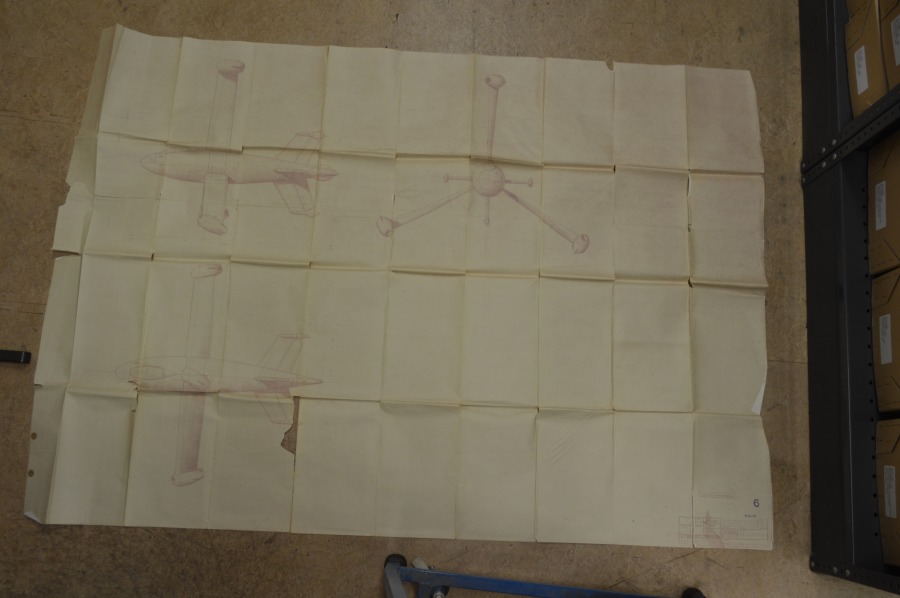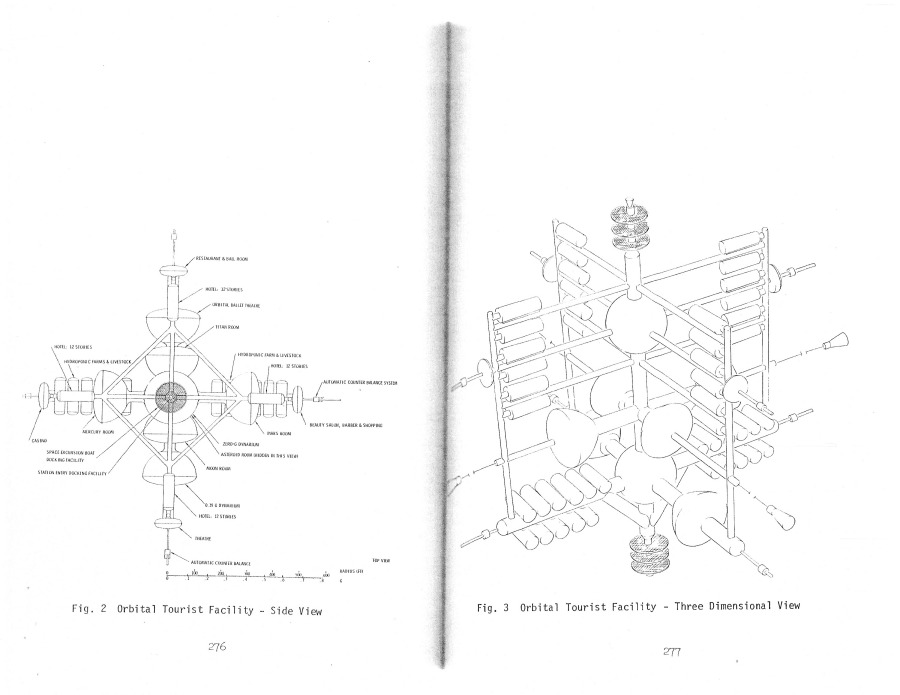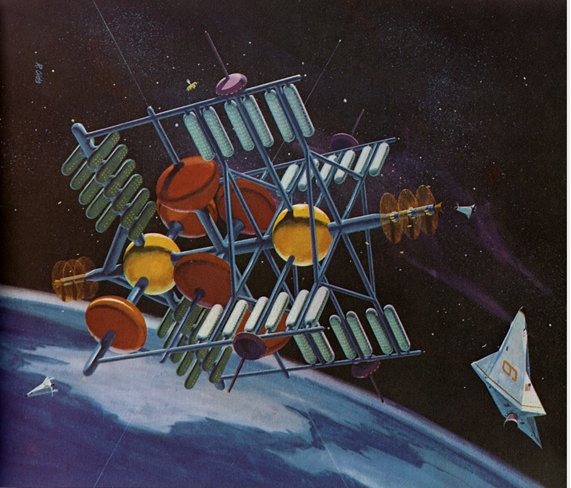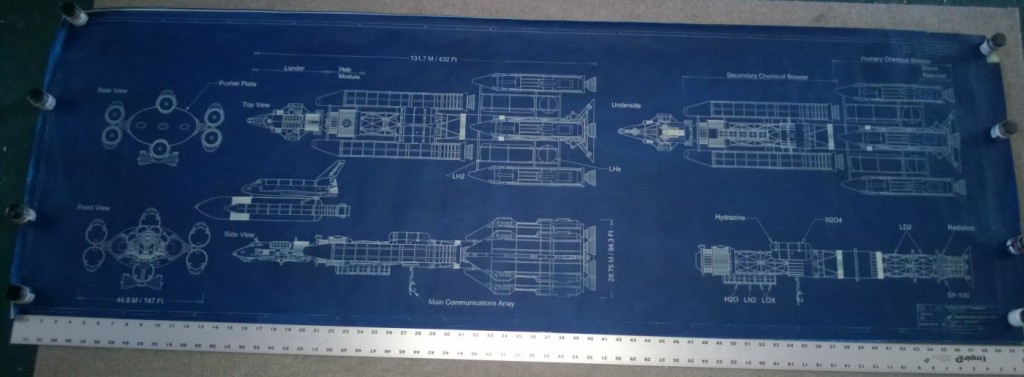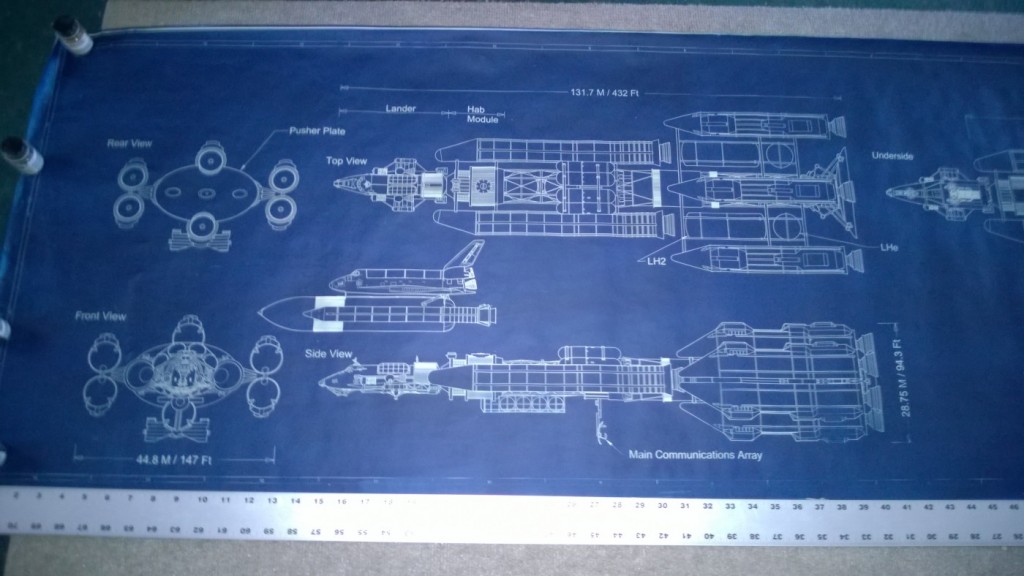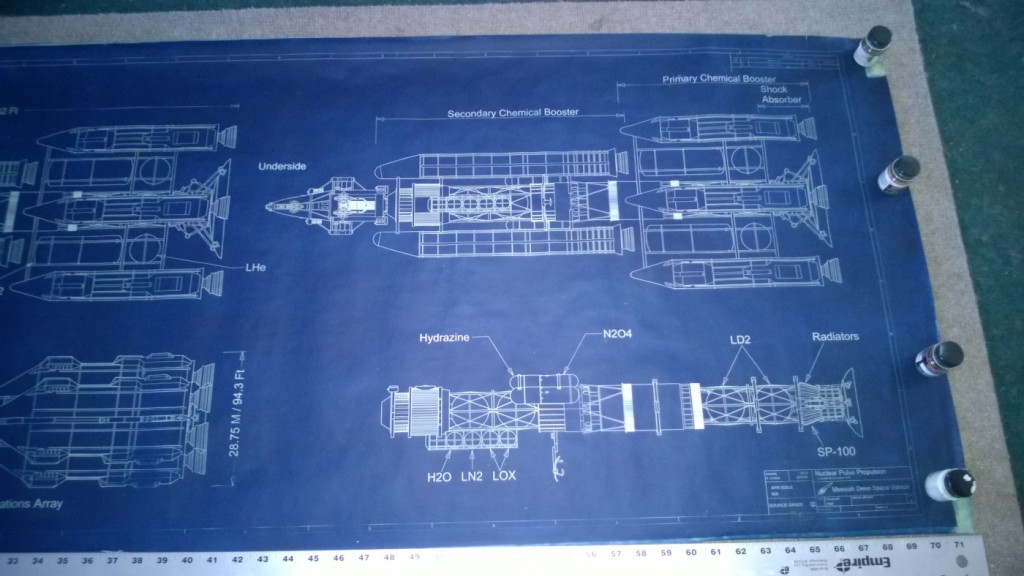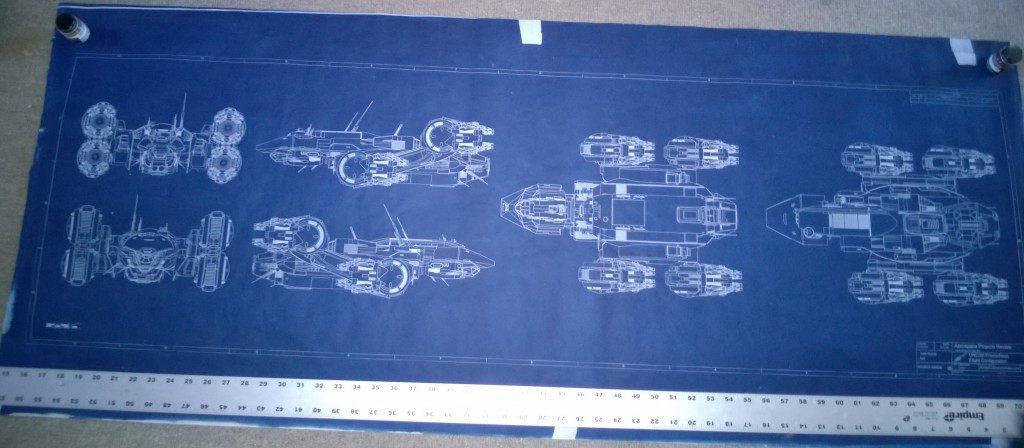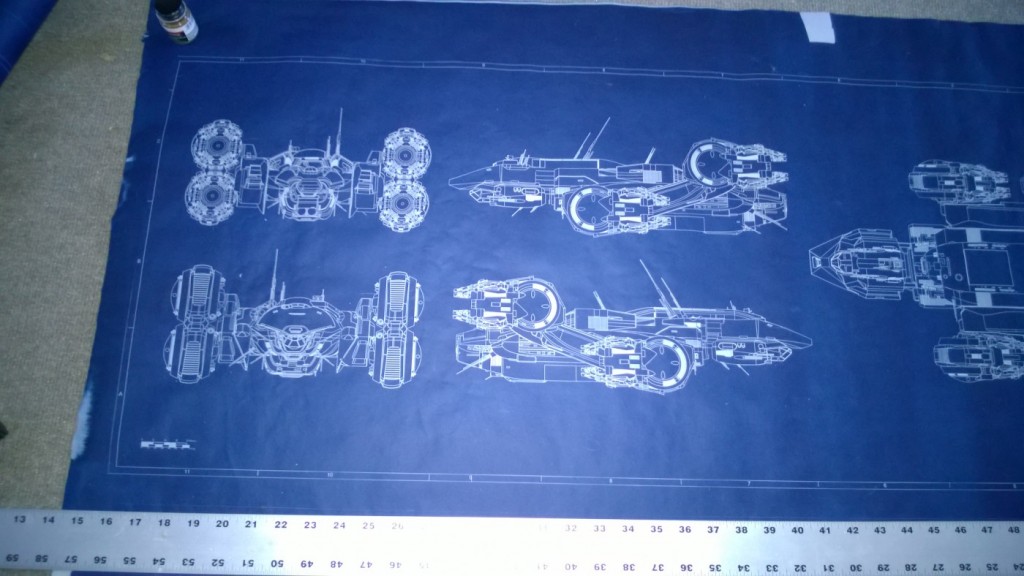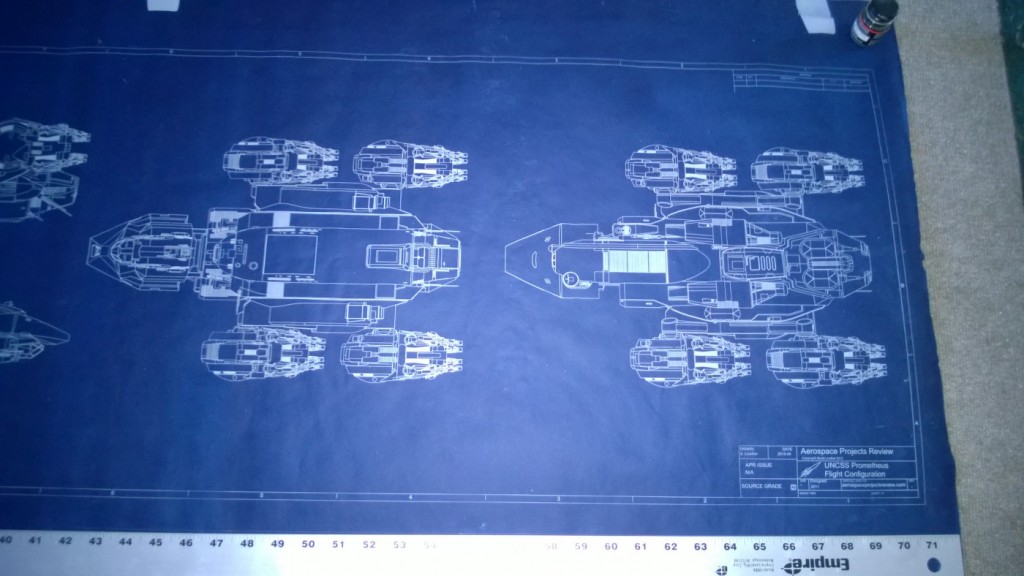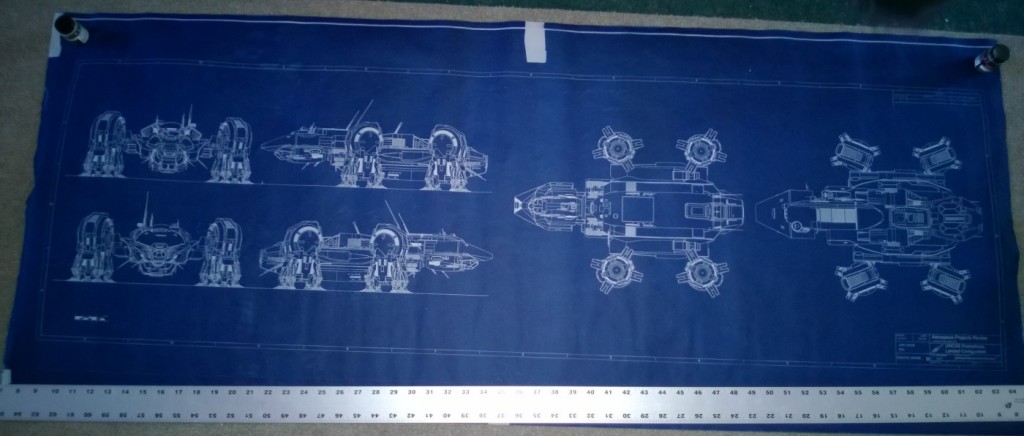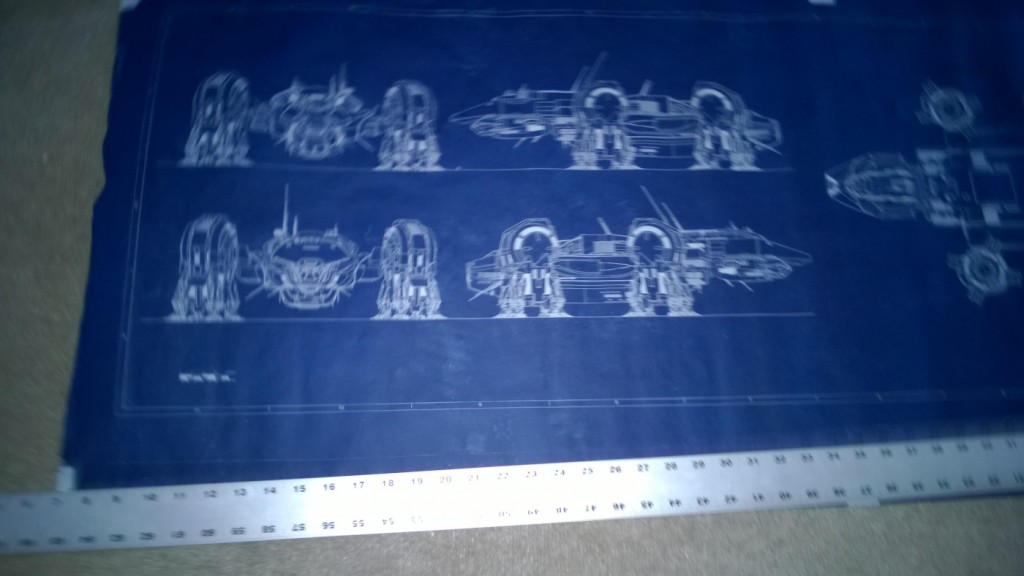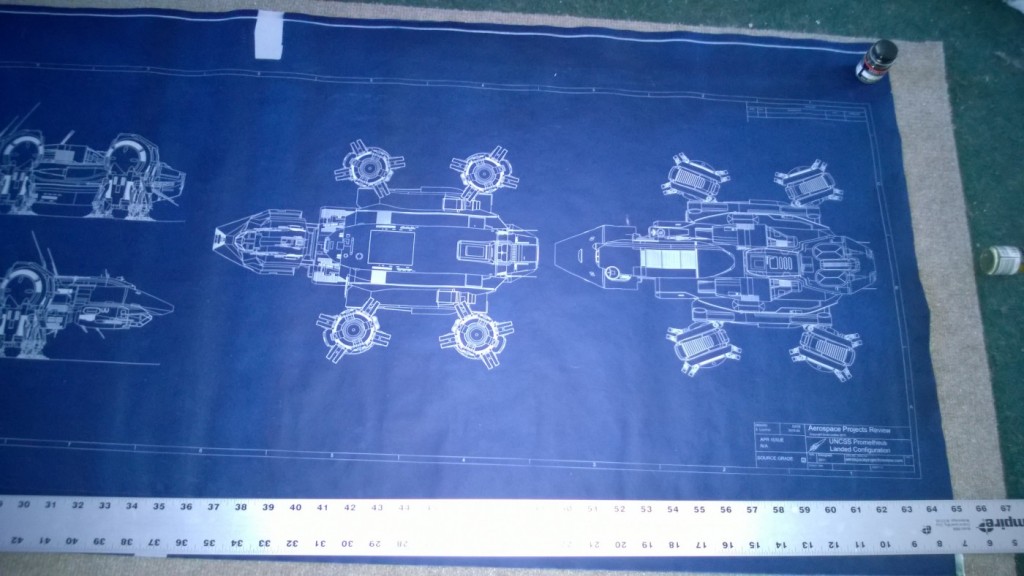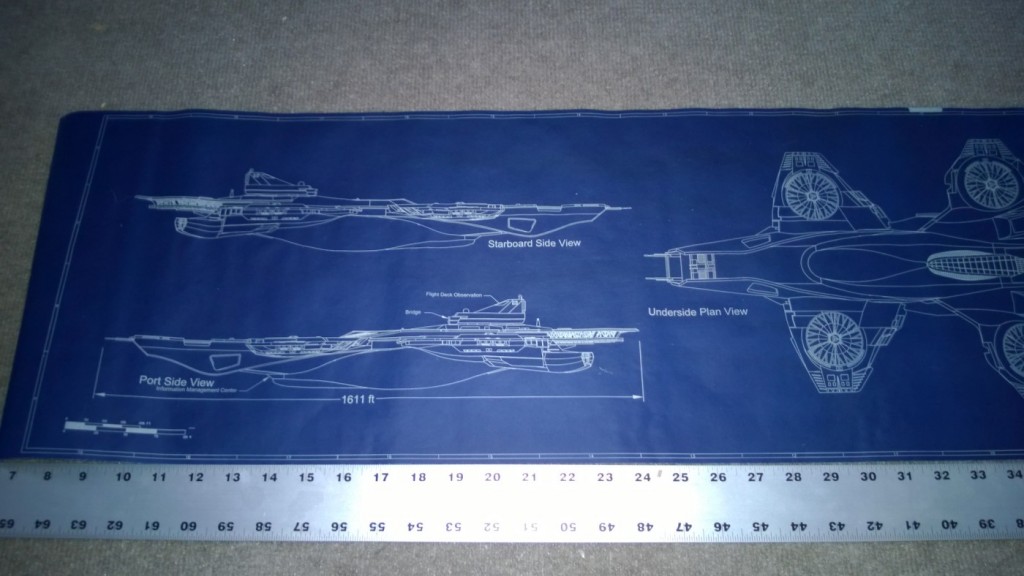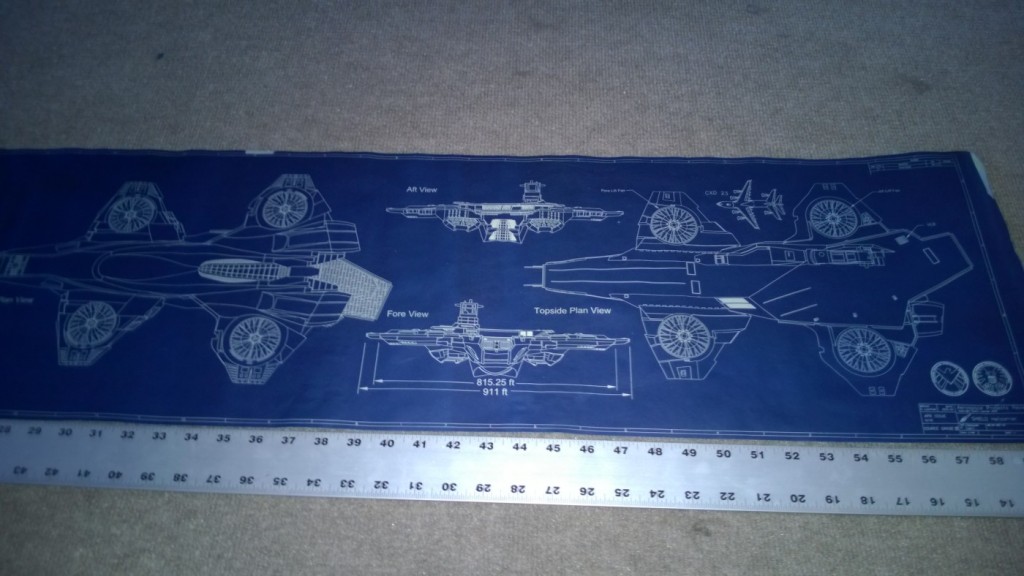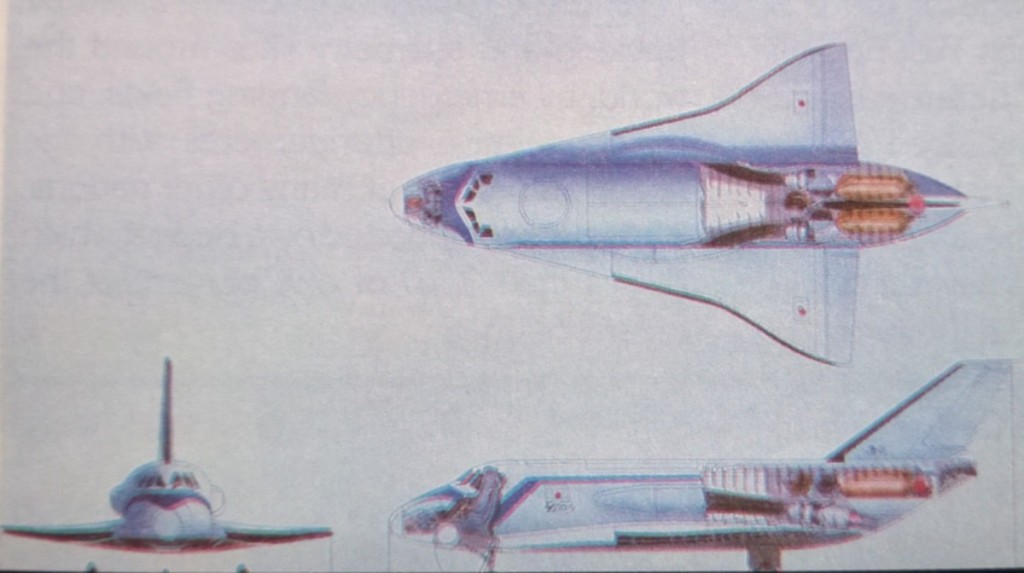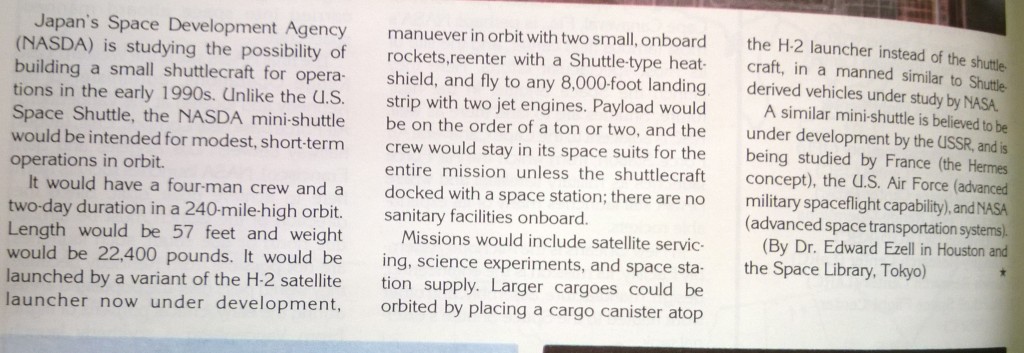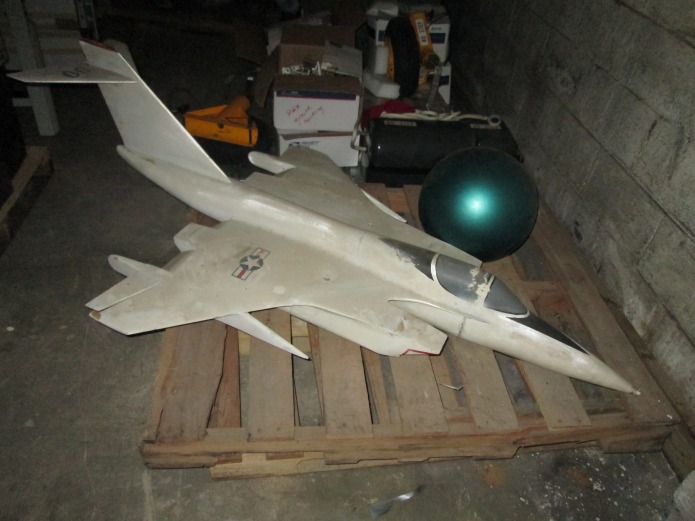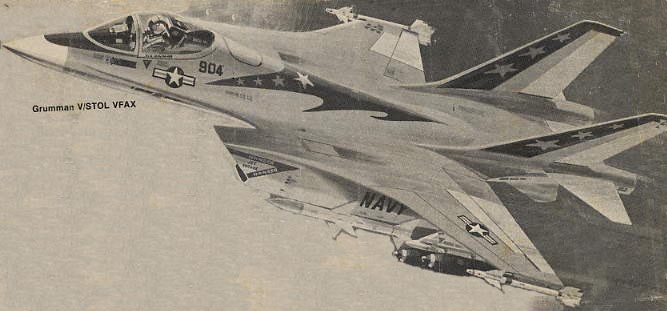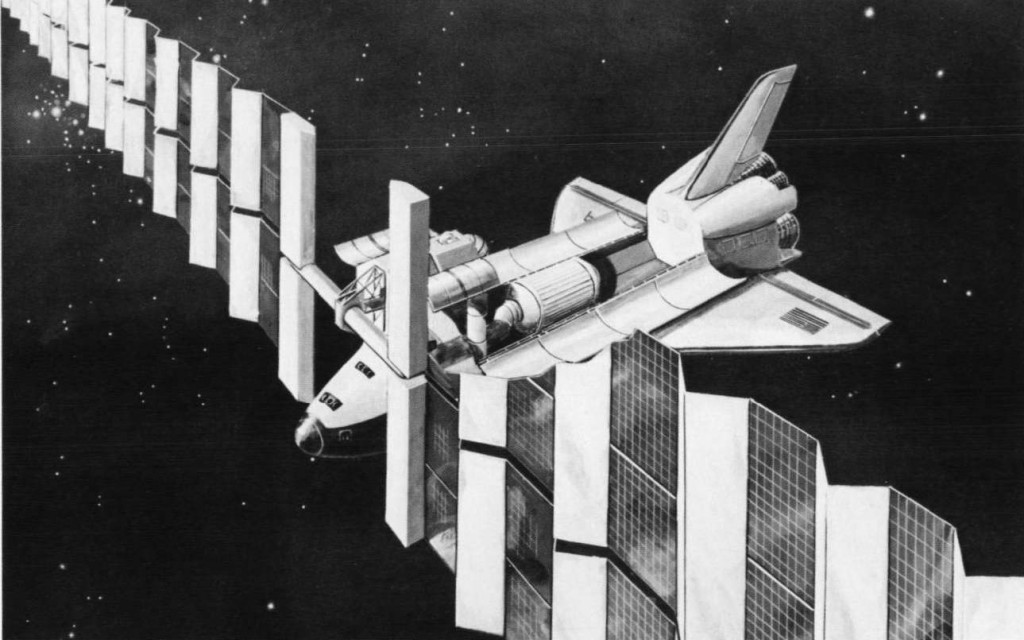The apparently original concept painting of the McDonnell-Douglas MD-12 showed up on eBay a few days back. The MD-12 was the last new aircraft that McD designed before being absorbed by Boeing; like the Boeing NLA and the Airbus A380, it was a big fat double decker designed to haul large numbers of passengers at once.
A Convair film about the NB-36H, a heavily modified B-36 bomber equipped with a nuclear reactor. The reactor was not hooked up to anything but instruments; all it did was sit there and give off radiation. Which was in fact the point of the exercise; the plane was an experiment in support of atomic powered aircraft, but the experiments were to see how crew, structure and instruments would stand up to the radiation environment produced by an airborne reactor.
The idea of orbital mirrors to shine sunlight down onto the night side of Earth precede WWII; Hermann Oberth proposed such at thing in 1923. Today if someone were to seriously propose an orbiting space mirror the probably use would be to *shade* the Earth from sunlight in order to reduce insolation and very, very slightly cool the planet. Still, it might prove an interesting mathematical study… if an orbiting mirror is used to alternately shade the Earth and then light up the Earth, is it a net positive? When you factor in that the night-time sunlight beamed down would presumably offset artificially generated lighting – say, by lighting up a city, replacing streetlights – it may be that the result would be to reduce planetary temperature.
As recently as 1977, Rockwell International (after Krafft Ehricke) examined the use of orbiting mirrors called “Lunetta” to provide illumination.
Photos of some of the aerospace history I’ve been able to purchase lately thanks to the APR Patreon. If you’d like to help out and get in on this action, please check out the APR Patreon page.
And then there’s this. While I haven’t managed to get hold of the actual item, I have gotten full-color scans of this, in chunks. I am now piecing it together into one gigantic whole.
In May of 1967, Barron Hilton – of Hilton Hotels – gave a presentation at the 13th Annual Meeting of the American Astronautical Society where he discusses the possibilities of orbiting and lunar hotels. Even as far back as ’67, Hilton considered such concepts to be perfectly feasible, and essentially inevitable. A shout-out is given to the Hilton depicted on Space Station V in “2001: A Space Odyssey” which would come out about a year later.
This being the 1960’s, of course there would be a “Galaxy Lounge” where guest could enjoy a martini.
Following Hilton was a presentation by Krafft Ehrike (then of North American Aviation) on the subject of “space tourism.” Once again, the concept was treated as wholly valid. He presented a design for a large orbiting tourist destination. While it featured zero-gravity facilities, it wisely was a rotating artificial gravity station, providing for the comfort and convenience of the guests. There would be several “world rooms” with different environments… artificial gravity levels matching the moon and Mars, say.
One assumption was that space launch costs would drop to $10/pound ($71/pound in 2015 dollars). At the time, with the rapid advances in space launch – remember, the first satellite had, at that time, only been launched less than a decade earlier, and now giant Saturn V rockets were preparing to send men to the moon – a price drop to those levels seemed a reasonable assumption. This would be done by having many, many launches of fully reusable vehicles, capable of reliably transporting the guests. The hotel would hold 1100 guests at a time, for 400,000 guest-days per year, and would have an in-orbit weight of 1,000,000 pounds. Profit would be a glittering $5 per guest per day… a total of about $39K/day in 2015 dollars.
I have scanned the Hilton and Ehricke papers and made them available for $4 and up APR Patreon patrons. If interested, please check out the APR Patreon.
A piece of artwork depicting Ehrickes space hotel. At some point Ehricke took to calling this “Astropolis.”
I’ve made a number of science fictional CAD models for Fantastic Plastic. Wonderfest, an annual hobby convention in Louisville, Kentucky, is coming up at the end of the month, and Fantastic Plastic is going to set up there. A while back I thought it might be interesting to take some of the CAD models I’ve created for current and forthcoming Fantastic Plastic model kits, specifically the Helicarrier, the Prometheus and the Messiah, and create 2D layout drawings… and then make cyanotype blueprints. Further, the blueprints would be at the same scale as the kits.
The end results? A moderately sized Helicarrier blueprint, two big Prometheus sheets (one showing the craft in flight, the other showing it in landed configuration), and one enormous Messiah blueprint, a full six feet long.
I don’t know if there is a market for such things. The Prometheus and the Messiah in particular are just gigantic. Were I to really try to commercialize them, I’d probably scale them down to at least 2/3 and more likely 1/2 the current size. Still, creating them was not a minor effort… so what the heck. I’m going to make them available for a limited time. Yes, they’re pricey. But they’re also *huge.* And a pain to make. And there won’t be very many of them on the entire planet (right now, two copies each of the Helicarrier and the Messiah; a grand total of one of the Prometheus prints).
These will be available for a two-week period, starting now. If some dark miracle occurs and I sell a hundred of them within that span, then, great! But however many, at the end of the two weeks, that’s it. All done, no more. I will total them up, and hand notate each one as numbered limited edition (“1 of 5,” or whatever, based on the order that orders come in) plus I’ll initial each one. Because why not.
Feel free to order as many of each as you want. Don’t forget postage… and don’t forget that with this one-time postage you can order as many *other* cyanotype prints as you like.
UPDATE: No longer available.
——
Prometheus prints:
Helicarrier:
A brief article on a Japanese mini-shuttle, photographed from an issue of “Space World” magazine a few months back (sadly, I didn’t catch the date of the article, but it would have been sometime in the early/mid 1980’s). This is, I believe, an early design of the “HOPE” spaceplane which was more or less Japans answer to the French Hermes spaceplane. This mini-shuttle would have been a little bigger than the Dyna Soar from twenty years earlier, but equipped not only with its own onboard rocket propulsion system but also a pair of turbojets of atmospheric propulsion.
This photo was passed to me to identify. Much of it looks like the Grumman G-623 VTOL fighter concept from the mid 1970s (illustrated below), but the tail is obviously entirely different and the nose is much pointier. It’s my guess that the model might represent an early version of the G-623 design. Can anyone confirm/deny?
The Grumman G-623:
If you’ve got a hankering to find out what the super-secret Lacrosse radar satellites look like, the Russians got you covered. A Russian satellite tracking facility in Siberia used telescopes to take photos of several of these satellites, and then, rather unconventionally, released the images. The images were collected and analyzed, and posted in a PDF album:
An Album of Images of LACROSSE Radar Reconnaissance Satellites
Made by a 60 cm Adaptive Optics System
at the
G.S. Titov Altai Optical-Laser Center
The images are not spectacular… nobody will be making details models based off them. But you can get a sense of the overall configurations(s), as well as the size of the antennae; from that, an analyst could give you a good idea what the capabilities of the sensor systems are.
Much more aerospace stuff is available via the APR Patreon.
A 1977 illustration from Rockwell depicting a Shuttle orbiter docked to an experimental solar power station. Large as it is, this would be a very tiny demonstrator of the sort of technologies needed for large-scale solar power satellites. The configuration shown here uses “troughs” with photovoltaic cells in the bases, with angles walls formed from, essentially, aluminum foil. These would serve as cheap, lightweight reflectors. The end result would be that more or less all of the sunlight impinging upon the cross sectional area of the array would be intercepted by PV cells,even though PV cells only make up a fraction of the total area. Since aluminum foil would be a lot cheaper and lighter than PV cells – and PV cells tend to work slightly more efficiently at higher insolation levels – this sort of arrangement was considered an important contender.
